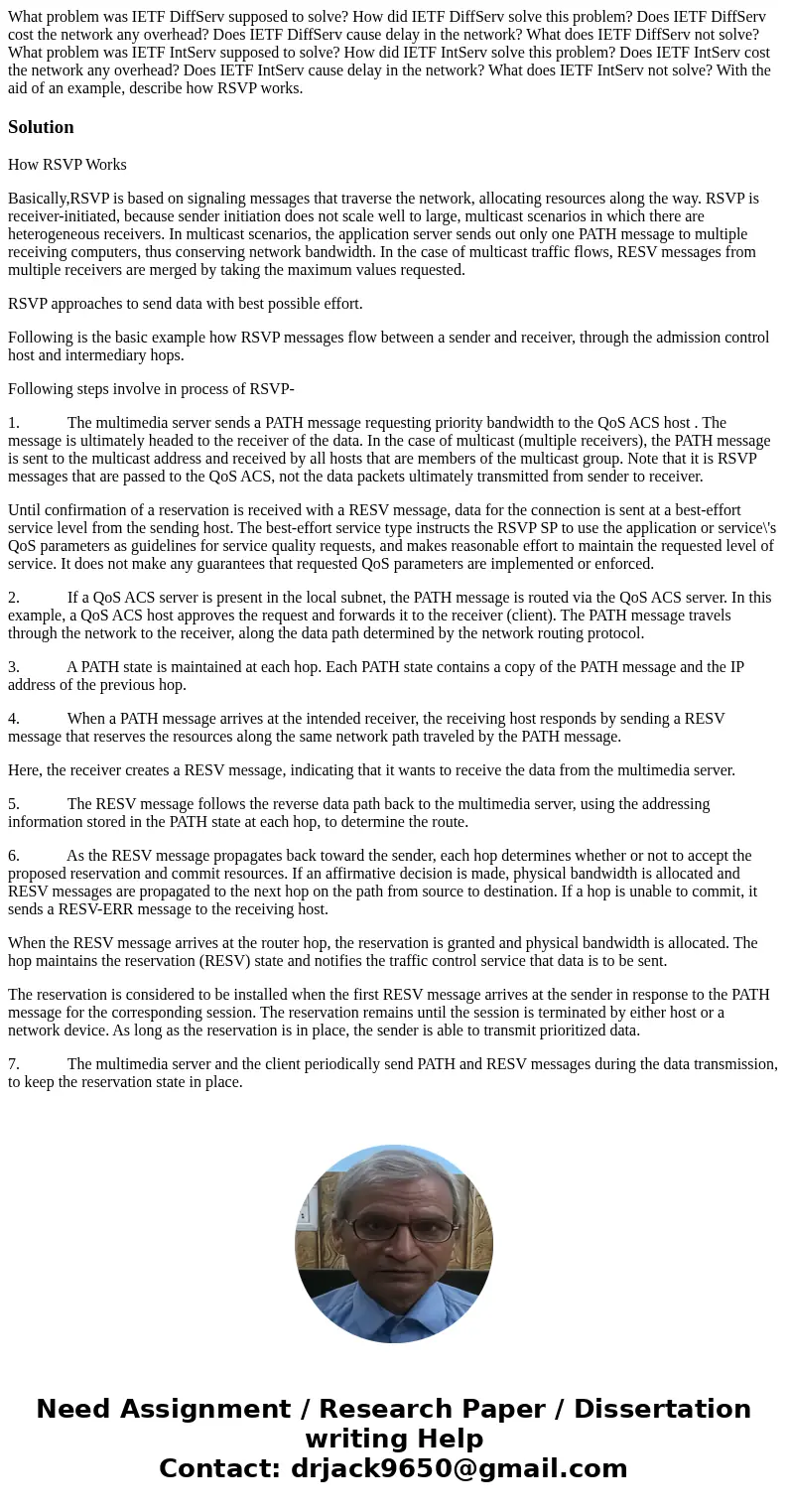What problem was IETF DiffServ supposed to solve How did IET
Solution
How RSVP Works
Basically,RSVP is based on signaling messages that traverse the network, allocating resources along the way. RSVP is receiver-initiated, because sender initiation does not scale well to large, multicast scenarios in which there are heterogeneous receivers. In multicast scenarios, the application server sends out only one PATH message to multiple receiving computers, thus conserving network bandwidth. In the case of multicast traffic flows, RESV messages from multiple receivers are merged by taking the maximum values requested.
RSVP approaches to send data with best possible effort.
Following is the basic example how RSVP messages flow between a sender and receiver, through the admission control host and intermediary hops.
Following steps involve in process of RSVP-
1. The multimedia server sends a PATH message requesting priority bandwidth to the QoS ACS host . The message is ultimately headed to the receiver of the data. In the case of multicast (multiple receivers), the PATH message is sent to the multicast address and received by all hosts that are members of the multicast group. Note that it is RSVP messages that are passed to the QoS ACS, not the data packets ultimately transmitted from sender to receiver.
Until confirmation of a reservation is received with a RESV message, data for the connection is sent at a best-effort service level from the sending host. The best-effort service type instructs the RSVP SP to use the application or service\'s QoS parameters as guidelines for service quality requests, and makes reasonable effort to maintain the requested level of service. It does not make any guarantees that requested QoS parameters are implemented or enforced.
2. If a QoS ACS server is present in the local subnet, the PATH message is routed via the QoS ACS server. In this example, a QoS ACS host approves the request and forwards it to the receiver (client). The PATH message travels through the network to the receiver, along the data path determined by the network routing protocol.
3. A PATH state is maintained at each hop. Each PATH state contains a copy of the PATH message and the IP address of the previous hop.
4. When a PATH message arrives at the intended receiver, the receiving host responds by sending a RESV message that reserves the resources along the same network path traveled by the PATH message.
Here, the receiver creates a RESV message, indicating that it wants to receive the data from the multimedia server.
5. The RESV message follows the reverse data path back to the multimedia server, using the addressing information stored in the PATH state at each hop, to determine the route.
6. As the RESV message propagates back toward the sender, each hop determines whether or not to accept the proposed reservation and commit resources. If an affirmative decision is made, physical bandwidth is allocated and RESV messages are propagated to the next hop on the path from source to destination. If a hop is unable to commit, it sends a RESV-ERR message to the receiving host.
When the RESV message arrives at the router hop, the reservation is granted and physical bandwidth is allocated. The hop maintains the reservation (RESV) state and notifies the traffic control service that data is to be sent.
The reservation is considered to be installed when the first RESV message arrives at the sender in response to the PATH message for the corresponding session. The reservation remains until the session is terminated by either host or a network device. As long as the reservation is in place, the sender is able to transmit prioritized data.
7. The multimedia server and the client periodically send PATH and RESV messages during the data transmission, to keep the reservation state in place.

 Homework Sourse
Homework Sourse